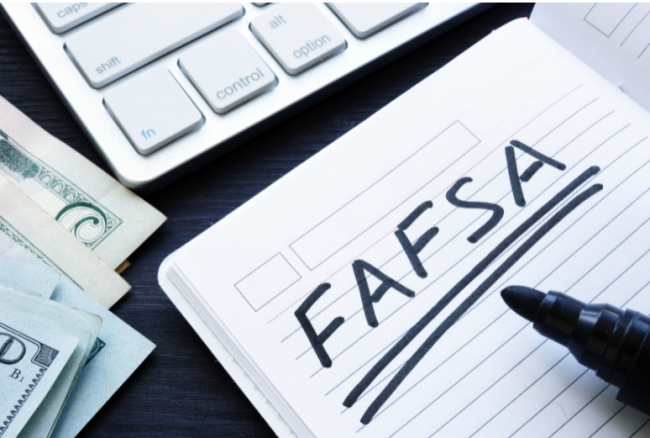You have /5 articles left.
Sign up for a free account or log in.

designer491/Getty Images Pro
On Dec. 31, hundreds of thousands descended upon Times Square, and up to a billion people tuned in virtually, to watch the ball drop signifying the end of 2023 and celebrating the start of 2024. On the same day, thousands of other Americans watched without celebrating a different dropping of the ball as the long-awaited soft launch of the new, simpler Free Application for Federal Student Aid turned out to be more soft than launch.
The rollout of the new FAFSA actually began the previous day, on Dec. 30, but many students and families who tried to access the form via the StudentAid.gov website were greeted by messages that the site was unavailable, thanking them for their patience.
I tried to access the site on Jan. 2 but was placed into a waiting room because traffic was busier than usual. I was able to get in the following day. At that point all indications were that the FAFSA would be available for short periods each day while application rates were monitored and bugs fixed. On Monday, Jan. 8, the Department of Education issued a press release announcing that more than one million students had successfully submitted the FAFSA and the form is now available 24-7.
I have often told students and parents that all of us process things on two different levels, one intellectual and the other emotional. The FAFSA launch is no different.
On an intellectual level, none of us should have been surprised by the ugliness of the rollout. There have been indications for months that it would be neither smooth nor pretty. The congressionally mandated changes in the FAFSA and the methodology for evaluating eligibility for federal student aid are long overdue, in some cases overturning 50 years of government policy.
It is one thing to understand that intellectually, and another to deal with it on an emotional level. I found myself irritated to be repeatedly placed on hold, and my ability to access the FAFSA does not even affect my future.
One of my pet peeves is phone systems where I am assured how valued a customer I am while I wait minutes for a human being to answer the phone. Having to listen to elevator music while on hold doesn’t help. We obviously have different definitions of “valued.” Rather than thanking people for their patience, StudentAid.gov should have asked for their forgiveness.
But enough about the problems. Obviously, the difficulties with the FAFSA rollout have created consternation among students and their families and those of us in the admissions profession. The financial aid process this spring will not be easy.
We can acknowledge that it will be a challenge and at the same time see it as an opportunity. Character is revealed during challenging times, and this is an opportunity for all of us to band together to, in the words of NASA flight director Gene Kranz in the movie Apollo 13, “work the problem.” To borrow another quote from Kranz (or Ed Harris, who played him in the movie), “Failure is not an option.”
First of all, we should remember this is in some sense a return to the old timeline for completing the FAFSA. The schedule this year is what was once the norm. Prior to 2016, when the date for submitting the 2017–18 FAFSA was moved to Oct. 1, students and their families could not complete the FAFSA until Jan. 1. We’re actually better off today, because under the old timeline families had to wait for end-of-year tax information, whereas now they can use tax information from two years prior. We’ve become spoiled by the new system.
Trying to simplify the financial aid process is a worthy and important goal, and the new FAFSA is a step in the right direction. Whereas last year families needed to answer more than 100 questions to complete the FAFSA, now some applicants will have to answer fewer than 20. The new need-analysis formula will “tax” less income for parents and students, with parents able to protect 20 percent more income and students 35 percent more. Having tax information downloaded to the FAFSA directly from the Internal Revenue Service for all applicants is the right move.
I am less certain about other changes. Is changing the name of what used to be the Student Aid Report to the FAFSA Submission Summary an improvement? Similarly, will the Student Aid Index (SAI) be better than the Expected Family Contribution (EFC)?
I particularly wonder about the end of the allowance for families with more than one child in college. That change affects federal aid, but unless I’m missing something (always a possibility), colleges still have the ability to factor in multiple children in college as they formulate aid offers using nonfederal aid dollars. I hope they’ll be sensitive to how the change affects those families.
Moving forward, the most pressing need is for colleges and school counselors to work together to educate families about completing the FAFSA, especially for our students who need financial aid to make going to college a reality. I have been encouraged by the number of emails I have seen from colleges trying to provide information and resources.
I’d also like to see the Department of Education ease the verification process for this cycle. The delay in releasing the FAFSA has created a potential bottleneck, and a verification moratorium would remove another impediment to getting past the slow rollout.
Depending on how the spring goes, admissions offices may need to be prepared and flexible to extend deposit deadlines for students who haven’t received financial aid packages from all the colleges to which they applied. Students deserve the opportunity to make their college choices with full information. We like to talk about the admissions process being student-driven. This is a chance for us to walk the walk.
Finally, let’s make sure we show appreciation and gratitude to the financial aid professionals who are on the front lines bearing the brunt of the delays and the new process. They face uncertainty as to how fast the FAFSA information will be available to institutions, and their spring will be stressful as they try to get packages pulled together. Think of them as first responders. They deserve our patience, sympathy and empathy.
Simplifying the FAFSA is a good first step, but it’s not enough. It’s time for all colleges to be transparent about costs and adopt a common way to report financial aid offers. The National Association for College Admission Counseling, the National Association of Student Financial Aid Administrators and eight other educational associations have joined together in the College Cost Transparency Initiative, and more than 360 colleges have agreed to make their financial aid letters more transparent. It’s time for us to find common ethical ground in the way we treat students by adopting both common language and reporting when it comes to financial aid.







.jpg?itok=YusUVfky)
